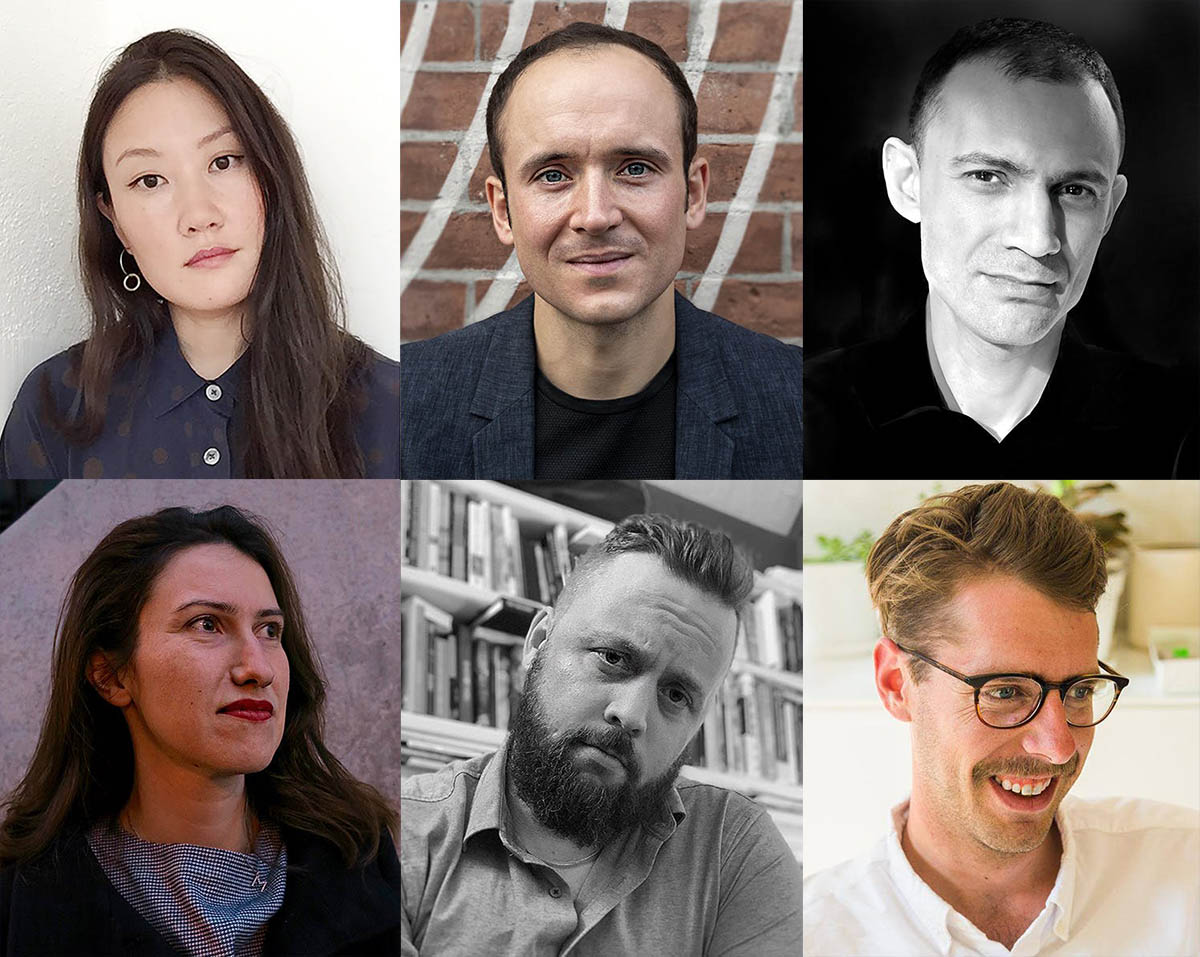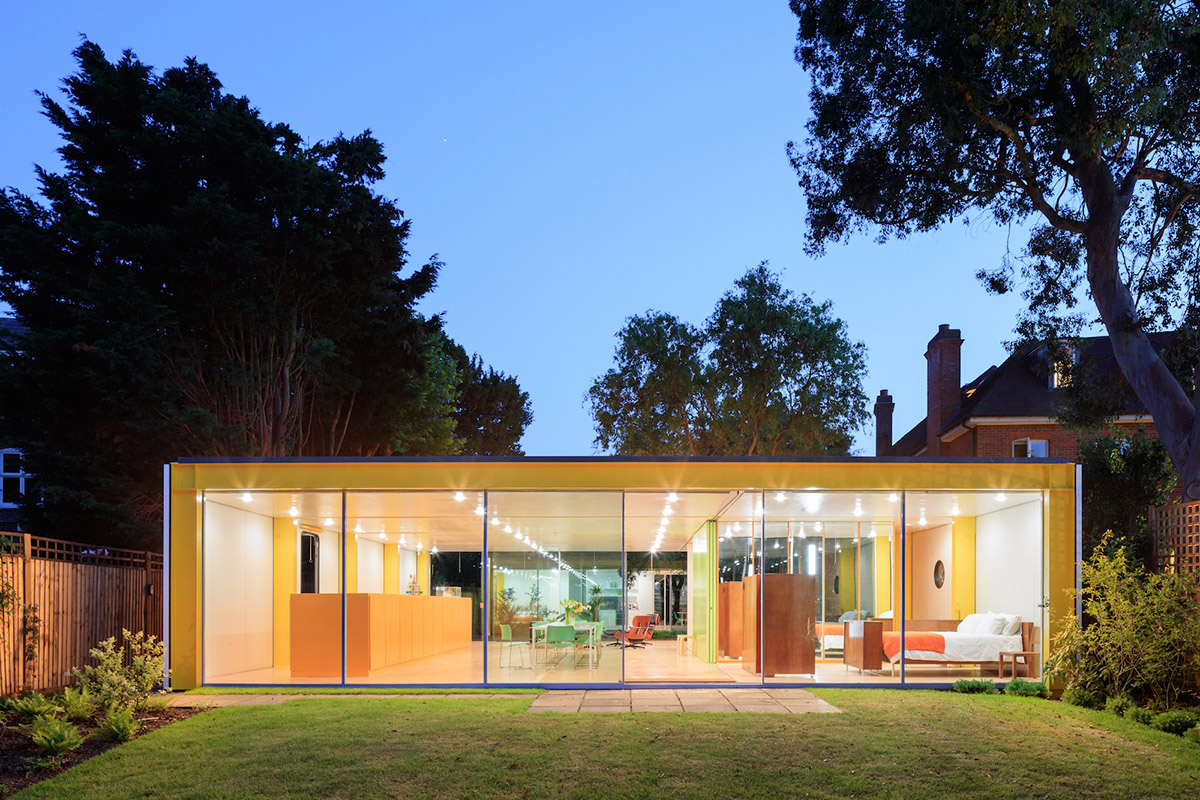Submitted by WA Contents
Harvard GSD announces 2019 Richard Rogers Fellows
United States Architecture News - Dec 12, 2018 - 00:02 13772 views

Harvard Graduate School of Design (GSD) has announced the six winners of the 2019 cycle of the Richard Rogers Fellowship, a research-focused residency program at the Wimbledon House, designed by Lord Richard Rogers in the late 1960s.
Now entering its third cycle, the Fellowship is inspired by Lord Rogers’s commitment to cross-disciplinary investigation and engagement, evident across his prolific output as an architect, urbanist, author, and activist.
The six fellows named for the 2019 cycle were chosen from nearly 140 applicants from around the world. In addition to a three-and-a-half-month residency, each fellow receives travel expenses to London and a $10,000 cash purse. They will pursue research on a variety of issues, ranging from materiality of steel and brick in the City of London to historical and multimedia investigations of the city’s estates, markets, and edges.

Image © Iwan Baan
Harvard GSD introduced the Richard Rogers Fellowship in October 2016, and named its inaugural class of fellows in February 2017. Since its inception, the Richard Rogers Fellowship has drawn serious scholars from a range of fields and backgrounds to London, where they have engaged with that city’s great research and design institutions and studied topics including housing, social housing, and so-called “property guardianship”; food, cooking, and their role in city development; and the potential of computational and digital fabrication in large-scale urban construction.
Harvard GSD has also engaged the Wimbledon House and the 2017 and 2018 Richard Rogers Fellows in salon-style discussions on London’s urban development and other topics.

Image © Iwan Baan
The 2019 Fellowship Selection Committee includes: Alison Brooks, K. Michael Hays, Sharon Johnston, Hanif Kara, Mohsen Mostafavi, Patricia Roberts, Lord Richard Rogers, and Simon Smithson.
In 2015, Lord Richard and Lady Ruth Rogers generously gifted the Wimbledon House to Harvard GSD to ensure its continued use as a residence and site for experimentation and to provide research opportunities for future generations of practitioners and scholars.
See the 2019 Richard Rogers Fellows:
Spring Fellows
Esther Choi (New York, NY)
"The Organization of Life: Architecture and the Life Sciences in Great Britain, 1929-1951"
Esther Choi is a PhD candidate in the History and Theory of Architecture and the Interdisciplinary Doctoral Program in the Humanities at Princeton University. She received a Master of Arts in the History and Theory of Architecture from Princeton in 2014, and a Master in Design Studies from Harvard GSD in 2008. Her research interests center on the entanglements between architecture and the life sciences in the nineteenth and twentieth centuries, and the intersections between artistic and architectural movements throughout the twentieth century. Her Richard Rogers Fellowship proposal will explore the exchanges that took place between scientists, architects, artists, and designers to reimagine Great Britain as a scientifically-ordered world after the economic crash of 1929. Spanning twenty years, four case studies organized according to evolutionary themes—natural selection, adaptation, heredity and mutation—revisit schemes that championed the belief that the human mind and behavior are thoroughly shaped by the environment.
John Paul Rysavy (New York, NY)
"A Brick is a Brick: Material and its Image in Postwar London"
John Paul Rysavy is an architect and Senior Associate at SHoP Architects in New York City where he has overseen work on the Botswana Innovation Hub, Uber Headquarters, Wave/Cave Pavilion, and US Embassy in Tegucigalpa. He has been a collaborator with Jenna Dezinski in the design and research practice And-Either-Or and worked previously with Will Bruder, Brian MacKay-Lyons, and David Heymann. He has been a Visiting Scholar at the American Academy in Rome and the Charles Moore Foundation. Rysavy received a Master of Architecture from the University of Texas at Austin following study at the University of Illinois at Urbana-Champaign. He is a recipient of the Stewardson Keefe LeBrun Grant from the Center for Architecture Foundation and the Francis J. Plym Fellowship from the Illinois School of Architecture. He taught previously at The University of Texas at Austin. While in London, Rysavy will explore cultures of brick construction associated with late modern and postmodern practice. Through writing and photogrammetry, research expands from a larger study investigating technical and rhetorical applications of brick following introduction of the cavity wall in Western Europe. The project traces antecedent models of material representation as an image and graphic in contemporary architectural production.
Summer Fellows
Sarosh Anklesaria (Ithaca, NY)
"Embedded Resistances within Neoliberal Regimes: Activist-Architects and the Contested Spaces of London’s Traditional Markets"
Sarosh Anklesaria is an architect and educator. He has worked as an architect with Diller Scofidio + Renfro (New York), Herzog & de Meuron (Basel), and Sangath, the office of Balkrishna Doshi, in Ahmedabad. He is currently a Visiting Critic at Cornell University’s College of Architecture, Art and Planning and has taught design studios at The Pratt Institute and Syracuse University. Anklesaria has a diploma in architecture from CEPT University and a Master of Architecture from Cornell University. He runs an independent practice based in New York and Ahmedabad and has been a member of the Architecture and Design panel at NYSCA. His writing, work and research has been published in a variety of media, including Architectural Review, Domus, Architect’s Newspaper, and Design Today, among others. His proposal stitches together two broad themes of research that have occupied his creative pursuits: architecture’s capacity to generate inclusive forms of public space, especially in the context of the neoliberal city, and the traditional market as the site of these contestations. The primary objective of the research is to study the traditional markets of London as well as the role of activist architects in generating spaces of empowerment within, or of consequence to, traditional markets.
Maria Letizia Garzoli (Novara, Italy)
"The Leasehold Uncanny Persistency: Shaping London Great Estates"
Maria Letizia Garzoli is an architect and researcher. She holds an architecture degree from the Politecnico di Milano and a Master in Design Studies from Harvard GSD. She has worked at practices including Machado Silvetti and Johnston Marklee, and is currently a researcher at Foster + Partners. As she argues in her proposal, the leasehold property is a centuries-old form of ownership that corroborated the lasting presence of large aristocratic estates in West London. Today, given the transition of these family holdings into proper corporate investment companies and the increased levels of frustration among small homeowners, the meaning and study of this persistent structure is especially important. The land ownership monopoly entails a monopoly of culture, form, and identity. Her Richard Rogers Fellowship research seeks to represent how this form of property law shaped and shapes the architectural and social panorama on the lands of the great estates of West London. The final product will consist of an illustrated atlas.
Fall Fellows
Peter Christensen (Rochester, NY)
"Materialized: the Global Life of Architectural Steel"
Peter Christensen is Assistant Professor of Art History at the University of Rochester, and earned a PhD from Harvard University in 2014. His specialization is modern architectural and environmental history, particularly of Germany, Central Europe and the Middle East. His theoretical interests center on issues of geopolitics and multiculturalism. He also maintains a strong interest in infrastructure and its history. Christensen plans to use the Richard Rogers Fellowship towards research for his forthcoming second book. By following the life of steel from the collection of raw minerals and metals to the distribution of finished goods in the long nineteenth century, instead of examining heroic architectural forms made from steel, Christenen’s book aims to challenge the traditional narrative that architectural steel was the primary and heroic material responsible for architectural modernism. He intends to achieve this revisionist interpretation by combining the methods of environmental history, which focuses on ecology and the macro scale, with localized sources of business and trade history, especially corporate archives.
Michael Waldrep (Berlin, Germany)
"Finding the Green Belt: Preservation, New Towns, and Development on the Urban-Rural Landscapes of Greater London"
Michael Waldrep is a media artist and researcher focused on architecture and urban planning. With degrees in Film Studies and City Planning from the University of California at Berkeley and the Massachusetts Institute of Technology, respectively, he was selected as a member of the first generation of Fulbright - National Geographic Digital Storytelling Fellows in 2014. Currently, he works in research and filmmaking at Studio Olafur Eliasson. As a culmination of an ongoing multimedia investigation into the global spread and differentiation of suburban planning and architecture, his proposal for the Richard Rogers Fellowship is to document the edges of Greater London. Waldrep’s practice, as a trained city planner and media artist, has been honed through similar studies of Mexico City, Cape Town, and Berlin. His project will seek to bring to light, through writing, interviews, archival research, and, above all else, first-hand photographic investigation, the myriad interacting factors that permeate the Metropolitan Green Belt and the symbiotic New Towns can be teased apart and brought to light.
The 2020 Richard Rogers Fellowship cycle will begin accepting applications in October 2019.
Top image courtesy of Harvard GSD
> via Harvard GSD
